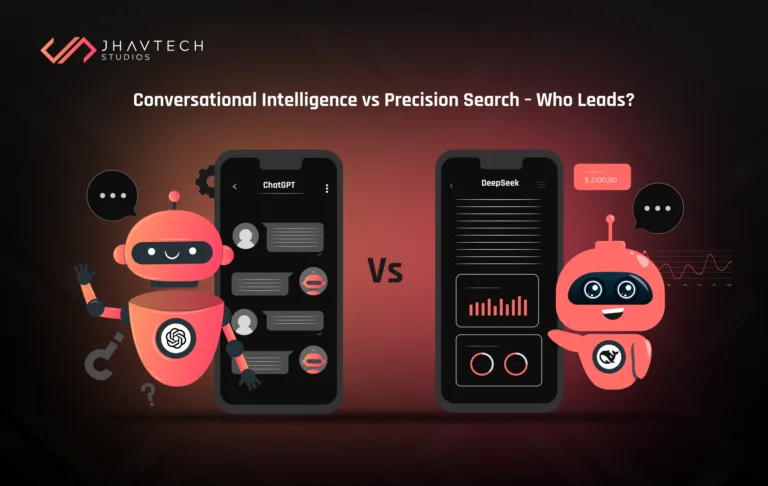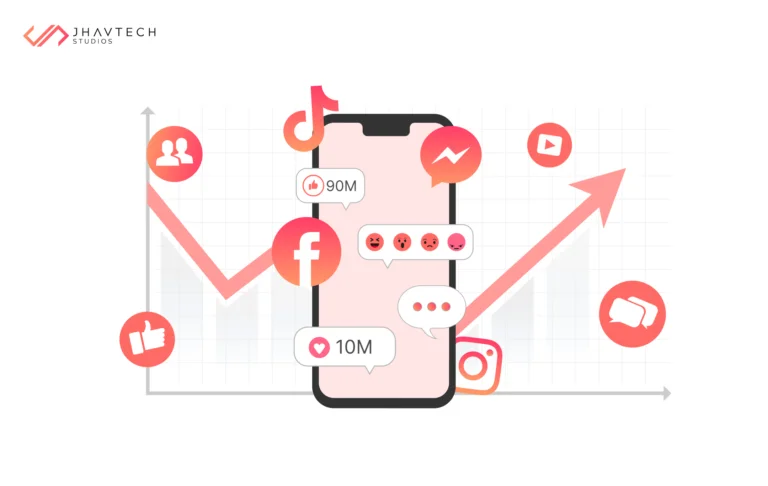In today’s data-driven world, data analytics is becoming a cornerstone for businesses looking to improve efficiency, uncover insights, and make well-informed decisions. Organisations across industries recognise that data is not just a byproduct of daily operations but a valuable asset for strategic growth. With the explosion of digital data, companies are using advanced analytics techniques to transform raw data into actionable insights, ensuring more precise, timely, and strategic decision-making.
From predicting market trends to optimising internal operations, data analytics has become an essential tool for businesses looking to stay competitive. This article explores the far-reaching impact of analytics on decision-making, its benefits, the challenges that organisations may face, and how to overcome them. Finally, we will review real-world examples to demonstrate the transformative power of data analytics in practice.
What is Data Analytics?
Data analytics refers to the process of examining datasets to draw conclusions, uncover patterns, and develop insights. Using a wide array of statistical tools, machine learning models, and algorithms, companies can analyse data to gain a clearer understanding of what is happening within their business and forecast future trends.
There are various forms of data analytics, each tailored to provide different types of insight. Descriptive analytics looks at historical data to understand what has happened, while diagnostic analytics delves into why certain outcomes occurred. Predictive analytics uses patterns found in historical and current data to make forecasts about the future. Prescriptive analytics goes even further, offering recommendations for the best possible outcomes.
Each of these types of analytics serves a specific role in enhancing decision-making processes. Businesses that adopt data analytics methods can leverage their data not only to understand past performance but also to anticipate future challenges and opportunities, which is particularly crucial in the rapidly evolving field of app development.
The Role of Data Analytics in Decision-Making
In the digital age, decision-making has become increasingly complex. Businesses face a vast array of data points from multiple channels—customer feedback, operational metrics, financial data, and external market forces, to name a few. Relying on intuition or historical trends alone is no longer sufficient. Data analytics provides organisations with a clearer, evidence-based approach to make smart and well-informed decisions.
1. Enhancing Strategic Decisions
Strategic decisions often involve long-term commitments with a high level of risk. Data analytics provides insights that help reduce uncertainty and guide strategic initiatives, such as market expansion, product development, and resource allocation. By relying on data instead of gut instinct, businesses can identify new growth opportunities and optimise investments to ensure they align with company goals.
2. Improving Operational Efficiency
Data analytics enables organisations to scrutinise internal processes, identify inefficiencies, and take action to optimise operations. This could involve streamlining supply chains, improving employee productivity, or reducing costs in production processes. In manufacturing, for example, companies use analytics to implement predictive maintenance, minimising equipment downtime and avoiding costly repairs.
3. Driving Customer-Centric Innovation
Customer data is arguably the most valuable asset for companies looking to improve their products or services. By analysing customer behavior, preferences, and feedback, businesses can design personalised experiences, enhancing satisfaction and loyalty. Data analytics allows companies to identify unmet customer needs and tailor their offerings accordingly. Predictive analytics helps forecast customer trends, allowing for more targeted marketing and product development. Additionally, conducting a thorough project audit can provide further insights into how analytics is being utilised within specific initiatives.
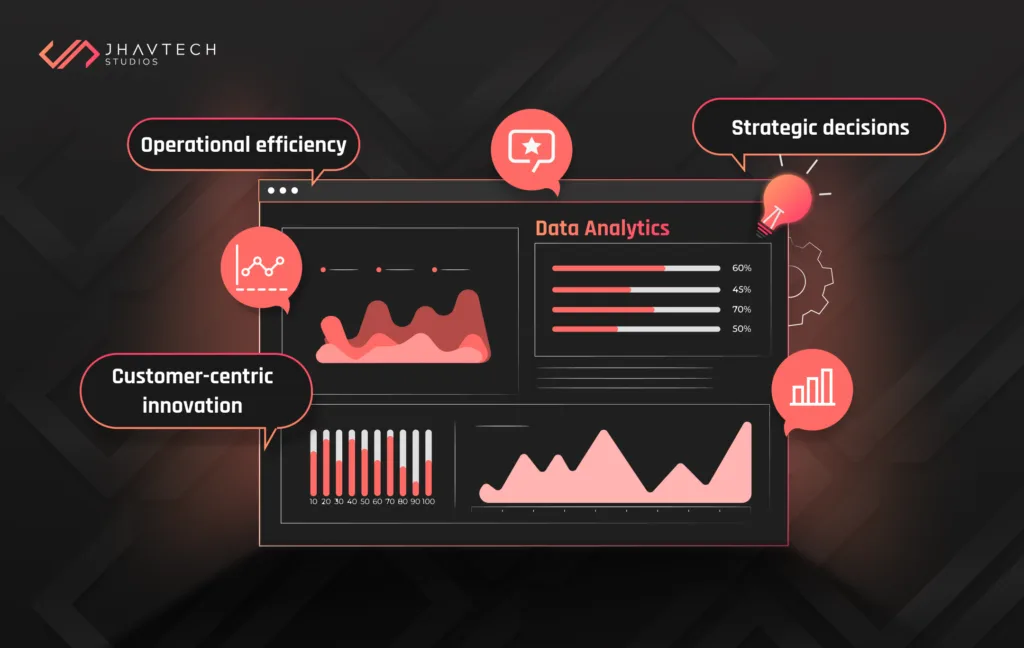
Benefits of Using Data Analytics in Decision-Making
Organisations that successfully integrate data analytics into their decision-making processes can enjoy a range of benefits, from improved efficiency to a better understanding of their customers. Let’s explore some of the key advantages.
1. Faster, More Accurate Decision-Making
One of the most significant advantages of using data analytics is the ability to make decisions quickly and accurately. Data-driven insights allow companies to respond swiftly to market changes, operational inefficiencies, or shifts in customer behavior. Instead of relying on anecdotal evidence or outdated information, decision-makers can use real-time data to guide their actions.
2. Improved Risk Management
Data analytics provides businesses with predictive tools that allow them to foresee potential risks and mitigate them before they become problematic. Whether it’s identifying market downturns, potential fraud, or operational bottlenecks, predictive analytics offers valuable foresight that can save time and resources. In industries like finance and insurance, data analytics plays a critical role in forecasting risk, helping companies implement more informed and secure strategies.
3. Greater Efficiency and Cost Savings
By identifying inefficiencies in business processes, data analytics enables companies to streamline their operations and reduce costs. This could involve automating repetitive tasks, improving resource allocation, or identifying supply chain bottlenecks. Over time, this improved efficiency leads to cost savings, higher productivity, and a more agile organisation capable of adapting to market changes.
4. Personalisation and Enhanced Customer Experiences
Personalisation has become a key driver of customer satisfaction and loyalty. Data analytics helps companies segment their customer base, understand their needs, and offer personalised recommendations or services. For instance, e-commerce platforms use predictive analytics to suggest products based on a user’s browsing and purchasing history. This level of customisation helps build stronger customer relationships and boosts sales.
5. Innovation and Competitive Advantage
Data analytics fosters innovation by revealing insights that would otherwise remain hidden. Companies that use data to identify unmet customer needs, market gaps, or new business opportunities are better positioned to innovate. This gives businesses a competitive advantage, enabling them to launch new products or services that align with evolving customer preferences. Furthermore, the integration of futuristic technologies can amplify these insights, allowing organisations to stay ahead in a rapidly changing landscape.
Types of Data Analytics Techniques
To fully leverage data analytics, organisations must understand the different techniques available. Below are the four main types of such techniques:
1. Descriptive Analytics
Descriptive analytics focuses on understanding past events by summarising historical data. Techniques such as data aggregation and data mining are often used to provide insights into what has happened in a given timeframe. This information is useful for understanding overall trends and performance metrics but does not offer explanations or forecasts.
2. Diagnostic Analytics
Diagnostic analytics goes a step further by asking the question “why” something occurred. It involves techniques such as correlation analysis and root cause analysis to find the reasons behind observed outcomes. For instance in our niche, if a web application experiences a decline in user engagement during a specific period, diagnostic analytics could help identify whether it was due to a recent update, a change in user preferences, or external factors affecting app performance.
3. Predictive Analytics
Predictive analytics uses historical data to make predictions about future events. By applying machine learning algorithms and statistical models, businesses can forecast trends such as customer behaviour, market changes, or potential risks. Predictive analytics is particularly valuable for anticipating demand, preventing churn, or identifying fraud.
4. Prescriptive Analytics
The most advanced form of analytics, prescriptive analytics, suggests specific actions based on predictive insights. By combining historical data, real-time information, and machine learning models, prescriptive analytics helps organisations determine the best course of action to achieve desired outcomes. It is frequently used in supply chain optimisation and resource management.
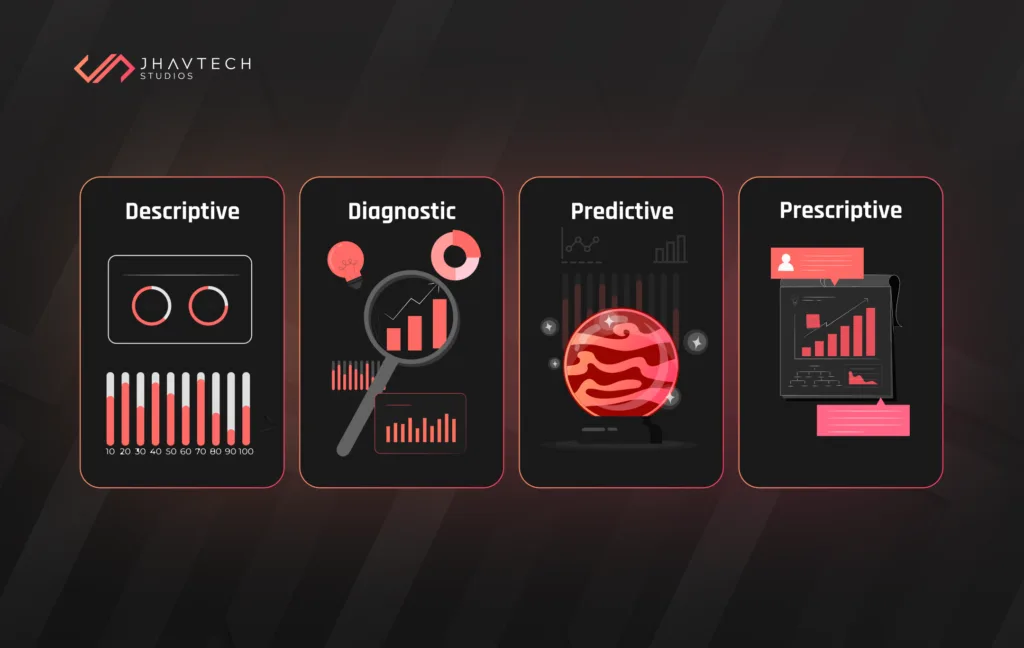
Challenges in Implementing Data Analytics
Despite its benefits, implementing data analytics is not without challenges. Many organisations face technical, organisational, and cultural hurdles that can limit the effectiveness of data-driven decision-making. Below are some common challenges:
1. Data Quality and Availability
Data is only as valuable as its quality. Incomplete, inaccurate, or outdated data can lead to poor decision-making. Organisations often struggle with data silos, where information is scattered across various departments and systems, making it difficult to integrate and analyse holistically.
2. Complexity and Expertise
Data analytics requires specialised skills and tools, such as statistical analysis, machine learning, and programming. Many organisations may lack in-house expertise or the necessary infrastructure to conduct effective data analysis. Building the right team and acquiring the appropriate tools can be a costly and time-consuming process.
3. Cultural Resistance
Shifting to a data-driven decision-making model often requires a cultural change within the organisation. Employees may resist the adoption of new technologies, especially if they are accustomed to making decisions based on experience or intuition. Fostering a data-driven culture requires training, clear communication, and buy-in from leadership.
4. Data Privacy and Security
Compliance with data privacy regulations is crucial for businesses. In Australia, the Privacy Act 1988 governs how personal information is handled, ensuring that individuals’ data rights are protected. This legislation outlines the principles of collecting, using, and storing personal information and requires organisations to take reasonable steps to safeguard data against misuse or loss. Additionally, the Australian Privacy Principles (APPs) provide a framework for ensuring transparency and accountability in data management practices, guiding businesses in their efforts to maintain compliance while leveraging analytics for informed decision-making.
Best Practices for Effective Data Analytics
To maximise the impact of data analytics on decision-making, organisations should adopt the following best practices:
1. Define Clear Objectives
Start by defining the specific business problems you want to address through data analytics. Clear objectives will guide the data collection, analysis, and decision-making process, ensuring that analytics efforts are aligned with business goals.
2. Ensure Data Quality
Invest in data governance frameworks that ensure data accuracy, consistency, and security. Regular data audits can help maintain data quality, reducing the risk of poor decision-making based on faulty information.
3. Leverage Advanced Tools
Adopt advanced analytics tools that support automation, visualisation, and real-time analysis. Cloud-based solutions and AI-driven platforms can significantly enhance your data analytics capabilities, making it easier to uncover insights and make data-driven decisions.
4. Foster a Data-Driven Culture
Encourage employees at all levels to embrace data-driven decision-making. This involves providing training on data literacy and analytics tools, ensuring that decision-makers are comfortable working with data, and embedding analytics into the organisation’s core processes.
5. Continuously Monitor and Refine
Data analytics is not a one-time effort. Continuously monitor your analytics processes and outcomes to ensure they remain effective. Regularly update models, review data, and adjust strategies based on changing business environments and customer needs.
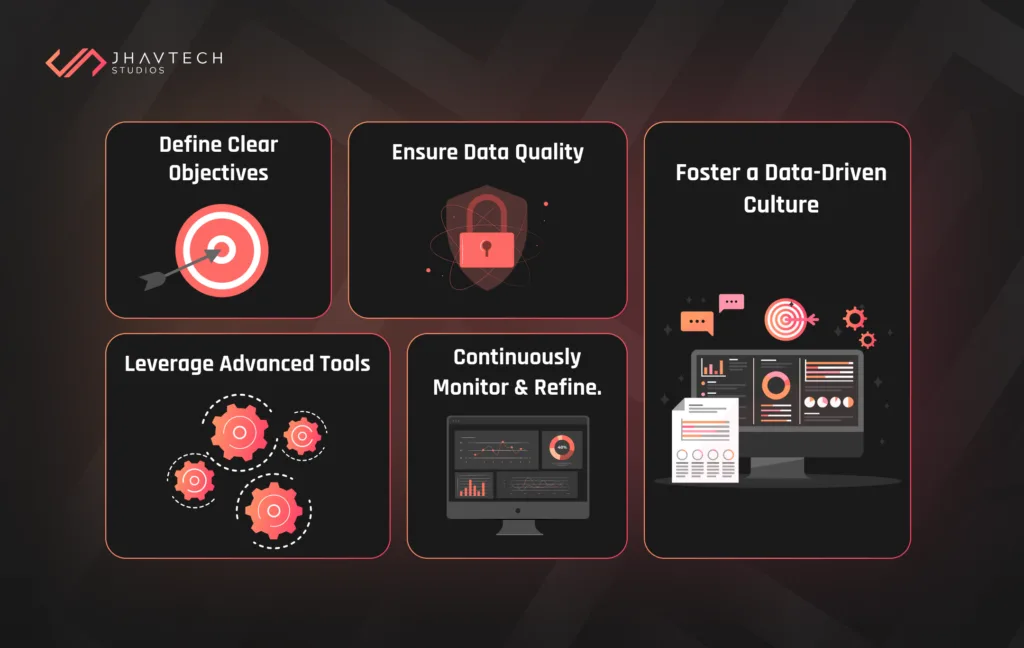
Real-World Examples of Data-Driven Decision-Making
Several companies have successfully used data analytics to transform their decision-making processes:
Netflix
By analysing viewing patterns, Netflix recommends personalised content to its users, driving engagement and subscription growth. Predictive analytics also helps Netflix decide which content to invest in for future programming.
Amazon
Amazon uses data analytics extensively to optimise its supply chain, recommend products, and forecast demand. The company’s ability to predict customer preferences and streamline operations has been a key driver of its success.
Uber
Uber is a highly successful custom software that leverages data analytics to match drivers with passengers, optimise routes, and set dynamic pricing. Real-time data helps Uber reduce wait times and provide a more efficient service for its customers.
Final Thoughts…
Data analytics has revolutionised how businesses approach decision-making. By leveraging data to inform strategic, operational, and customer-centric decisions, organisations can drive growth, enhance efficiency, and gain a competitive edge. Although challenges exist, adopting best practices and investing in the right tools and expertise will enable companies to unlock the full potential of data analytics.
As the business landscape continues to evolve, data analytics will remain an indispensable tool for organisations that aim to stay agile, innovative, and ahead of the competition.
Ready to transform your decision-making processes and drive success? At Jhavtech Studios, we specialise in harnessing the power of data analytics to help businesses make informed, strategic choices. Contact us today for more information and let’s discuss how we can collaborate to create something exceptional together!
.svg)

